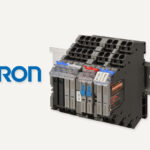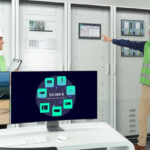ASIA ELECTRONICS INDUSTRYYOUR WINDOW TO SMART MANUFACTURING
Schneider, Phoenix Contact Drive Universal Automation
Schneider Electric said its EcoStruxure Automation Expert universal automation solution can now seamlessly deploy to Phoenix Contact’s PLCnext Technology. Most importantly, this is a key milestone in the industrial world’s transformation to open, software-defined automation.
Both share the same runtime technology, giving industrial operators new levels of engineering and maintenance efficiency. That is, due to simple application portability and interoperability.
Developed and managed by UniversalAutomation.org, an independent, not-for-profit association. The shared runtime execution engine, based on the IEC 61499 standard, enables an ecosystem of automation plug and produce software applications. Moreover, these are completely independent from the hardware on which they execute.
This new software-defined automation means industrial companies can mix and match automation solutions and no longer be held back by closed and proprietary automation platforms, a problem the industry has been struggling with for a while.

EcoStruxure Automation Expert, a fully open and interoperable software-centric system was designed to decouple automation software from hardware and seamlessly integrate offers from different automation vendors, providing unprecedented freedom for industrial enterprises, and advanced agility and simplicity for industrial automation system integrators and OEMs. Industrial companies can now unlock Phoenix Contact PLCnext controllers with UniversalAutomation.org runtime so users can then develop and deploy applications to one or more PLCnext controllers using EcoStruxure Automation Expert.
Software-defined universal automation
A confluence of significant market trends is making the shift to software-defined automation inevitable. Industry analyst IDC made a comprehensive report on this in its recent perspective Software-Defined Industrial Automation: An Update.
“We’ve talked about this idea of software-defined automation for a few years,” said Jonathan Lang, Research Director, Worldwide IT/OT Convergence Strategies at IDC. In addition, Lang said, “We are now starting to see general availability of some of this technology, which means we have to speak more practically and prescriptively about the impact to organizations and how to best prepare for it.”
Meanwhile, Andrew Vanderpool, Senior Project Engineer at Phoenix Contract and Co-Chair of the OPAF Technical Working Group, said, “Collaborating with Schneider Electric has demonstrated the flexible and open nature of the PLCnext Technology.”
Furthermore, Vanderpool said, “We are excited to see how we can continue to collaborate and ‘enhance the automation thinking’ between universal automation and PLCnext Technology.”
“This deployment shows that automation solutions that work well across different systems are viable, providing greater flexibility in our fast-changing digital world,” said Fabrice Jadot, Senior Vice President, Next Generation Automation Solution Incubator at Schneider Electric. In addition, Jadot said, “No company can achieve the promise of Industry 4.0 alone. Today’s announcement shows that an extended ecosystem of partners working together with open architectures can positively impact industrial operations.




